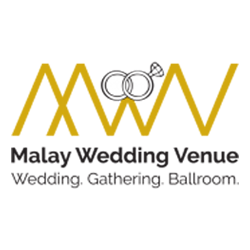Islamic calligraphy is a highly revered art form that has been an integral part of Indian Muslim weddings for centuries. Calligraphy, the art of beautiful handwriting, has been an essential part of Islamic art and culture since the seventh century. In this blog, we will explore the history, symbolism, and trends of Islamic calligraphy in Indian Muslim weddings.
History
Islamic calligraphy has a rich history in India, dating back to the Mughal era. Mughal emperors were great patrons of art and architecture, and calligraphy played a significant role in their artistic expressions. They commissioned numerous calligraphers to create beautiful artworks, including the Quran, Hadith, and other Islamic texts.
Islamic calligraphy in India was also heavily influenced by Persian and Arabic calligraphy styles. Persian calligraphy, in particular, played a significant role in shaping Indian calligraphy, as many Persian calligraphers migrated to India during the Mughal era.
Symbolism
Islamic calligraphy is not just a form of art; it also holds significant symbolism in Islam. Calligraphy is an important tool for the transmission of Islamic knowledge, and the beauty of calligraphy is often seen as a reflection of the beauty of Allah’s words.
Islamic calligraphy is also used to decorate mosques, Quranic manuscripts, and other Islamic texts. It is believed that the use of calligraphy in these religious texts makes them more beautiful and enhances their spiritual value.
In Indian Muslim weddings, calligraphy is often used to decorate the wedding venue, invitation cards, and other wedding-related items. It is a way to incorporate Islamic art and culture into wedding celebrations and add a touch of elegance and sophistication to the event.
Trends
Islamic calligraphy has evolved over the years, and new trends and styles have emerged. One of the most popular calligraphy styles in Indian Muslim weddings is the Nastaliq script. Nastaliq is a cursive script that originated in Persia and is widely used in Urdu calligraphy. It is known for its flowing lines and delicate curves, making it a popular choice for wedding invitations and decorations.
Another popular calligraphy style in Indian Muslim weddings is the Thuluth script. Thuluth is a bold and elegant script that is often used for religious texts and is popular in Arabic calligraphy. It is characterized by its elongated vertical lines and pronounced curves, making it a popular choice for wedding decorations.
In recent years, there has been a growing trend toward incorporating calligraphy into wedding favors and gifts. Couples are opting for personalized calligraphy items, such as engraved pens, notebooks, and keychains, to give as wedding favors to their guests. Calligraphy is also being used to create customized wedding gifts, such as calligraphic name plates, wall art, and jewelry.
Conclusion
Islamic calligraphy is an art form that has been an integral part of Indian Muslim weddings for centuries. It is a way to incorporate Islamic art and culture into wedding celebrations and add a touch of elegance and sophistication to the event. Islamic calligraphy holds significant symbolism in Islam, and it is often used to enhance the spiritual value of religious texts. Over the years, new calligraphy trends and styles have emerged, and calligraphy has become an important part of the wedding industry, with couples opting for personalized calligraphy items as wedding favors and gifts. The art of Islamic calligraphy continues to evolve and remains an essential part of Indian Muslim weddings.
